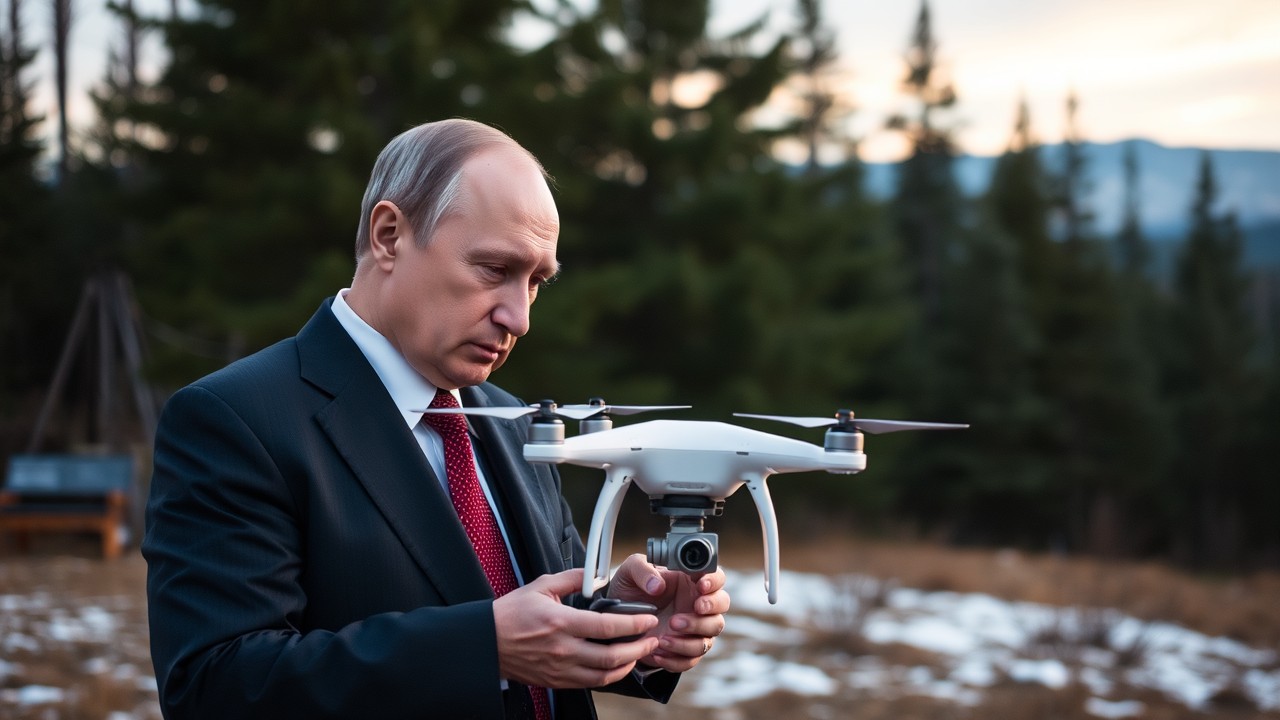In recent years, Russia has significantly increased its procurement of DJI drones, a move that has raised eyebrows globally. This surge in drone purchases stems from several strategic and practical reasons.
DJI drones, primarily designed for commercial and recreational use, have found a new role on the battlefield. The Russian military uses these drones for short-range reconnaissance. They provide real-time aerial footage, helping to identify enemy positions, monitor troop movements, and ensure the safety of their own forces. This tactical advantage is crucial in the vast and varied terrains where traditional surveillance methods might fall short.
One of the primary reasons for the popularity of DJI drones is their affordability. Compared to military-grade drones, DJI’s commercial drones are significantly cheaper, making them an attractive option for large-scale deployment. This cost-effectiveness allows the Russian military to equip more units with drones, enhancing their overall operational capabilities without a substantial financial burden.
DJI drones are known for their user-friendly interfaces and ease of operation. Soldiers with minimal training can effectively use these drones in the field. The simplicity of operation reduces the time and resources needed for training, allowing for quicker deployment and adaptation in various combat scenarios.
Despite international sanctions and restrictions, Russian buyers can still access DJI drones. Reports suggest that these drones can be smuggled into Russia from neighboring countries, ensuring a steady supply. This availability, coupled with the high demand, has led to a significant increase in the number of DJI drones being used by the Russian military.
DJI drones are versatile tools that can be adapted for various military applications. Beyond reconnaissance, they have been used for electronic warfare, targeting, and even direct strikes. Their adaptability makes them valuable assets in modern warfare, where flexibility and rapid response are critical.
DJI drones, originally designed for commercial and recreational use, have demonstrated significant potential in military contexts due to their versatility and ease of modification. Their use extends far beyond simple reconnaissance. In modern warfare, these drones have been adapted for electronic warfare, where they can jam or interfere with enemy communications and radar systems. This capability is particularly useful in disrupting adversarial operations without direct engagement, making them a valuable tool in cyber and electronic battlefields.
In targeting, DJI drones provide real-time intelligence that enhances precision in directing artillery, missiles, or airstrikes. Their aerial vantage point and ability to hover discreetly over targets give commanders a strategic edge, allowing for more accurate assessments of battlefield conditions. This precision reduces collateral damage and improves mission success rates.
Moreover, DJI drones have been adapted for direct offensive operations, where they can be equipped with lightweight explosives or grenades. This innovation turns a previously benign device into a low-cost, agile weapon capable of delivering pinpoint strikes on enemy personnel or equipment. Such tactics are particularly advantageous in asymmetrical warfare scenarios, where conventional forces face irregular adversaries who utilize guerrilla tactics.
The adaptability of DJI drones underscores their growing importance in contemporary conflicts, where speed, flexibility, and the ability to innovate are critical to maintaining a competitive advantage. Their ease of deployment, relatively low cost, and modular design allow for rapid integration into military strategies, enhancing both offensive and defensive capabilities on the battlefield.
In the ongoing conflict, the DJI Mavic series has emerged as the most popular drone on the battlefield for Russian forces. Despite DJI’s official suspension of sales in Russia, these drones are still being acquired through various intermediaries. The Mavic drones are favored for their advanced capabilities, ease of use, and versatility in reconnaissance and tactical operations. Their widespread availability and effectiveness have made them a crucial tool in modern warfare.
The increasing use of DJI drones by Russia underscores the evolving nature of modern warfare. These drones provide a blend of affordability, accessibility, and tactical advantage that traditional military equipment often lacks. As technology continues to advance, the role of commercial drones in military operations is likely to expand, raising important questions about regulation, ethics, and the future of warfare.
